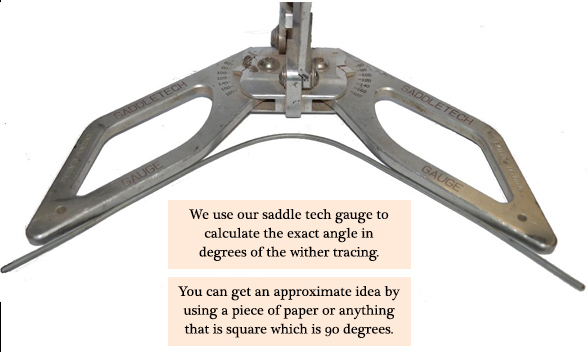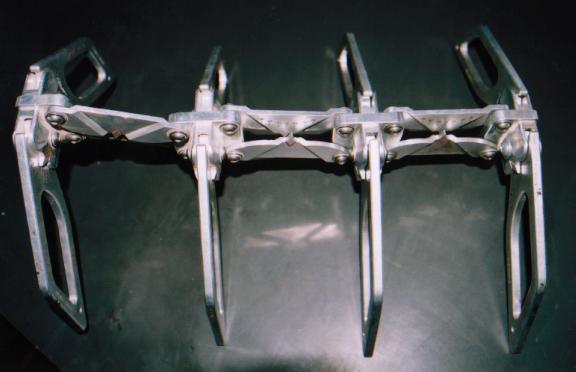
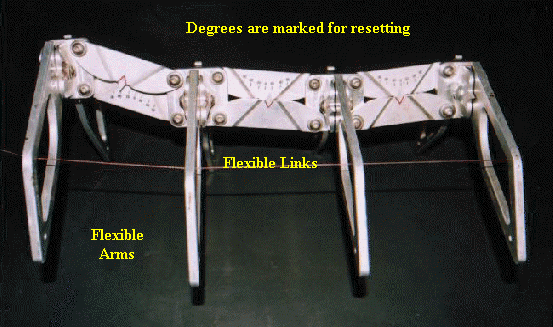
Saddle Tech Gauge checks existing saddles that may look a perfect fit on the perimeter of the saddle when on the horse, but actually bridges causing pressure points at either end of the saddle.
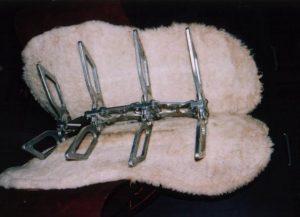
Saddle Tech Gauge can check the shape of a tree before the saddle is made. This ensures a correct fit for a valuable horse.
Fitting saddles to a particular horse is fairly easy. I have a saddle tech gauge which is a series of flexible arms joined by flexible links. The arms and links are marked in degrees and once set to the shape of a particular horse the measurements are noted and the gauge can be reset at any time to that exact shape. This gauge gives the exact angle and contour of the horses back and when the gauge is set and put into a saddle or saddle tree a perfect fit can be guaranteed for that horse.
During the course of fitting thousands of horses I have found that the angle at the wither is mostly between 90 and 100 degrees. This represents a variation of just 10 degrees. In other words its not the angle of the horses back that changes to a large amount, but the height of the wither.
Given the fact that a horse can change its shape depending on age, diet or how much work its doing in order to build muscle I have designed saddle trees that fit the wider quarter horse types but have the underside of the pommel cut away in order to give clearance for a high withered horse. The saddle trees and saddles I design fit a good range of horses off the rack. Once again I have found that even as horses get fatter, thinner or muscle up the shape or angle of the back does not change but the wither becomes more or less evident as the case may be. The important thing is wither clearance to suit any situation.
Of course there are exceptions to the rule and I have fitted horses is narrow as 85 degrees or as wide as 120 degrees at the wither. For these rare types at opposite ends of the scale the correct fit that can only be obtained by using the saddle tech gauge is essential.
Wither tracings can be done using a piece of wire and then when drawn on paper can be faxed to me. These are an excellent guideline and in most cases ensure a good fit but only at the wither. The saddle tech gauge guarantees angle, shape and contour but above all a perfect fit.
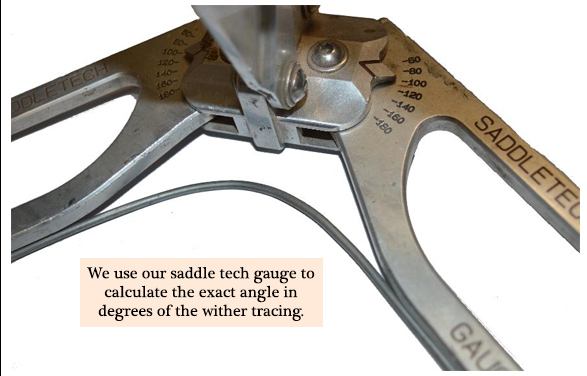 It is most important that the rider be constantly aware of the changing shape of his horse or should he change horses to make sure the saddle is a reasonable fit. Saddles can be raised or lowered by using various thickness saddle cloths. The absolute test of saddle fit is in the sweat pattern left on a horses back after the saddle is removed. If a dry spot is evident the saddle is not a good fit. The sweat glands have been cut off and the white patches of hair growth will soon follow. The underlying muscle soreness will result in a valuable horse being rendered useless.
It is most important that the rider be constantly aware of the changing shape of his horse or should he change horses to make sure the saddle is a reasonable fit. Saddles can be raised or lowered by using various thickness saddle cloths. The absolute test of saddle fit is in the sweat pattern left on a horses back after the saddle is removed. If a dry spot is evident the saddle is not a good fit. The sweat glands have been cut off and the white patches of hair growth will soon follow. The underlying muscle soreness will result in a valuable horse being rendered useless.
I can guarantee a perfect fit when you order a saddle for a particular horse. You, the rider must monitor the horses ever changing shape to ensure its top condition and performance. Saddles can be altered to accommodate different shapes or new horses so if you have a saddle fit problem call me. I am Trevor James, James Saddlery. 40 years in the business of saddle making and design.



